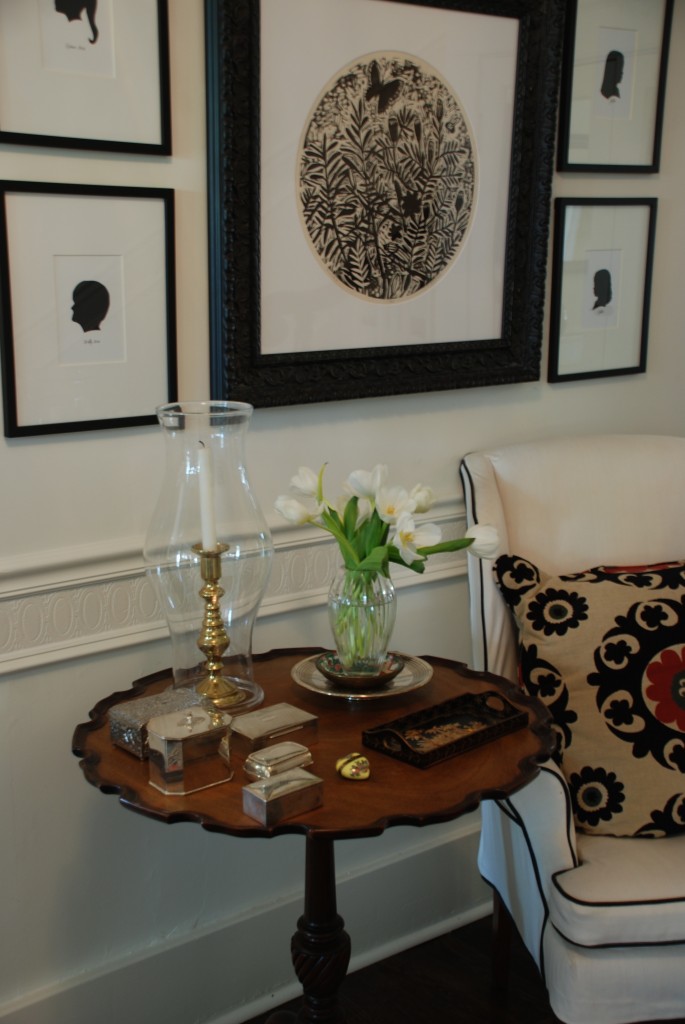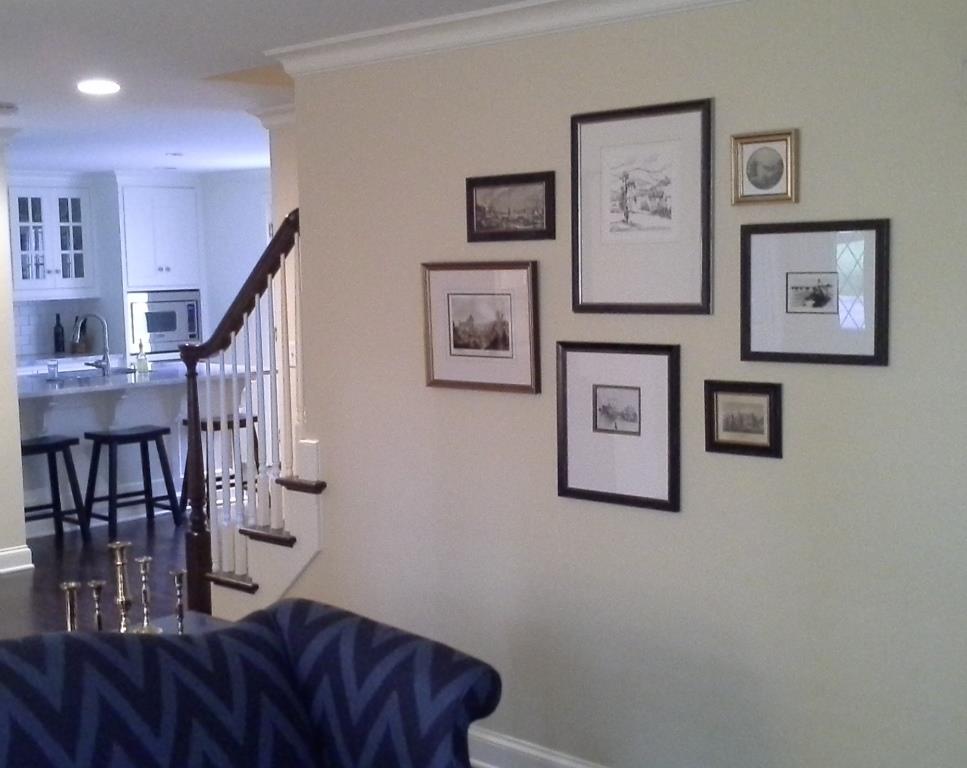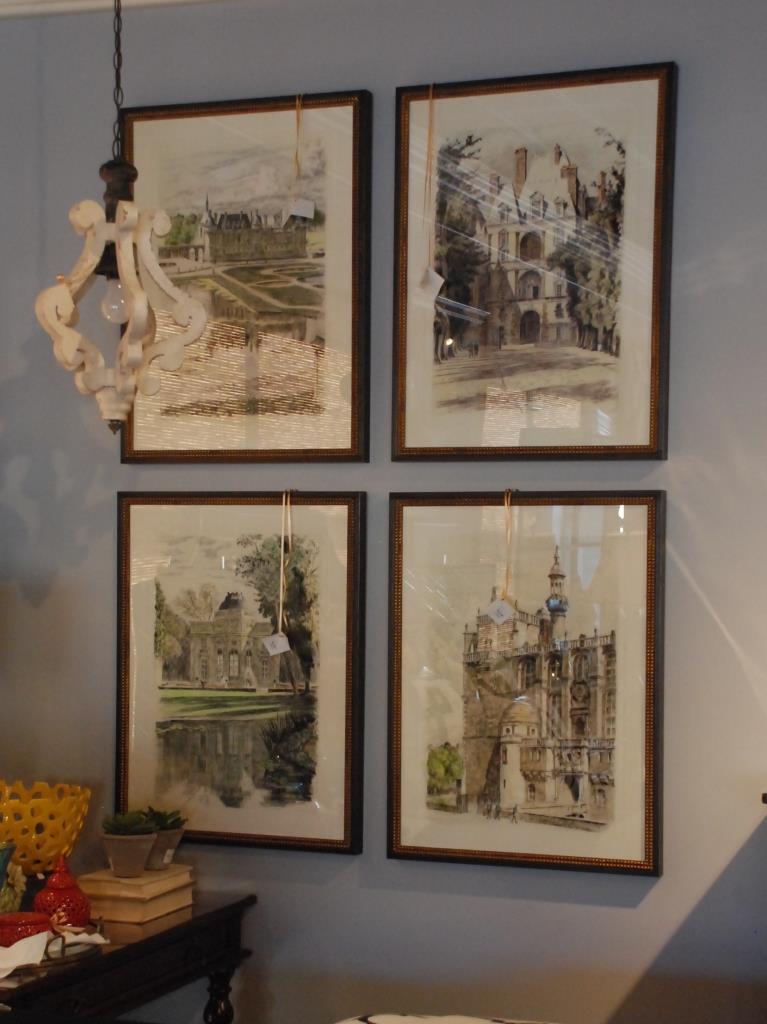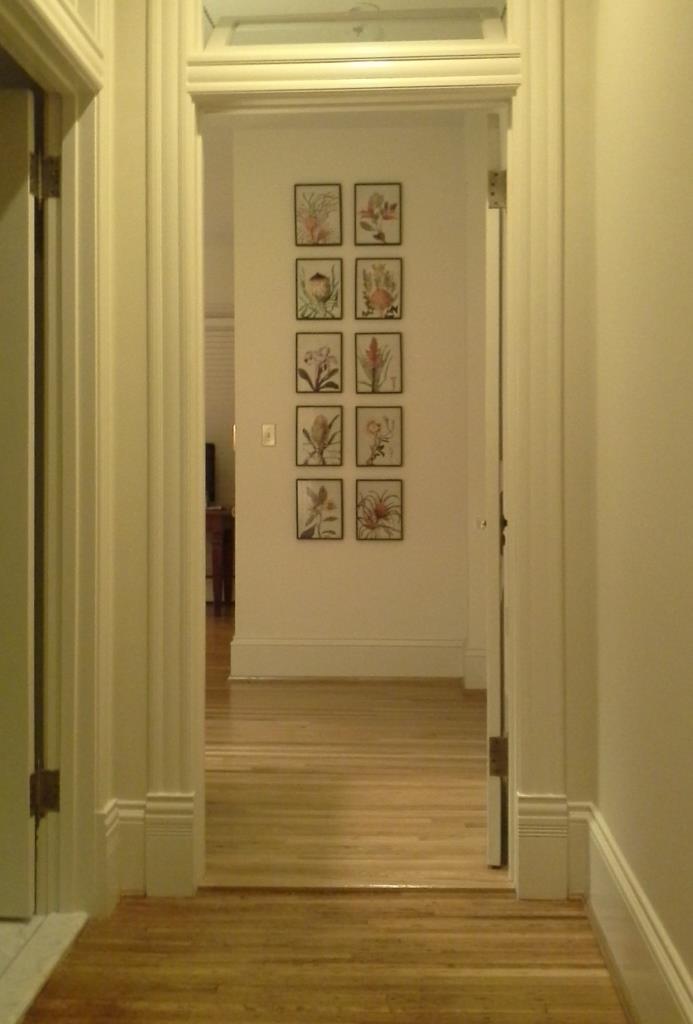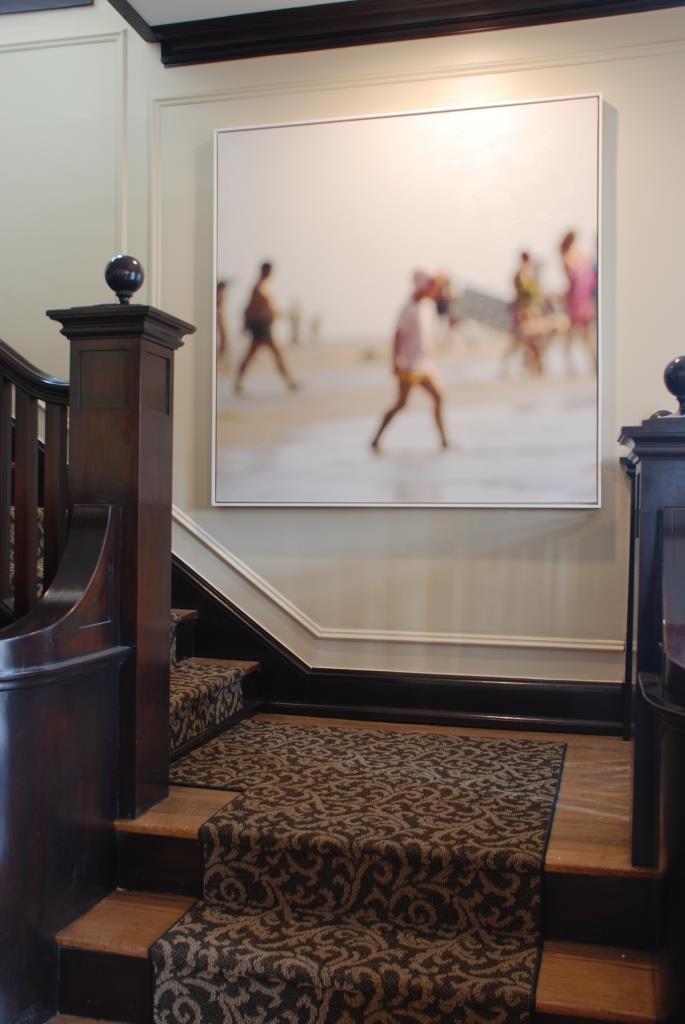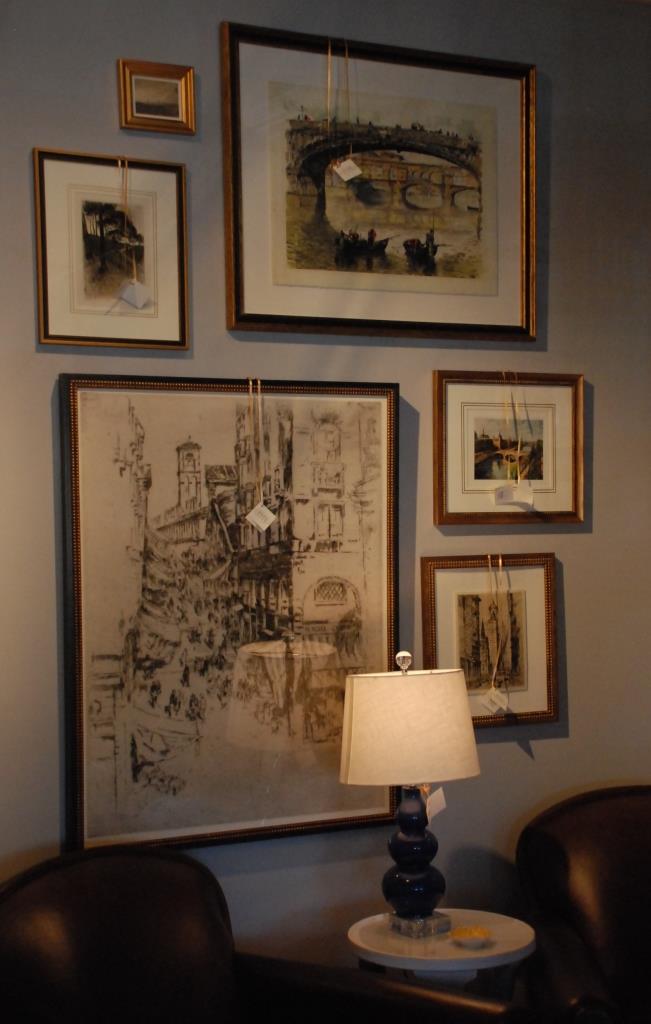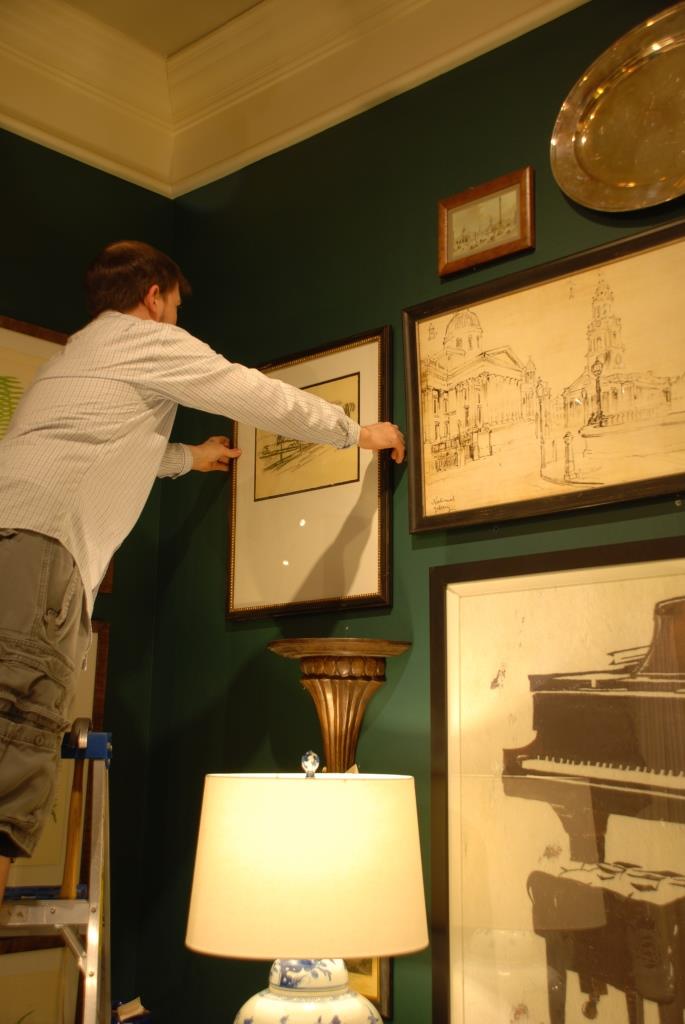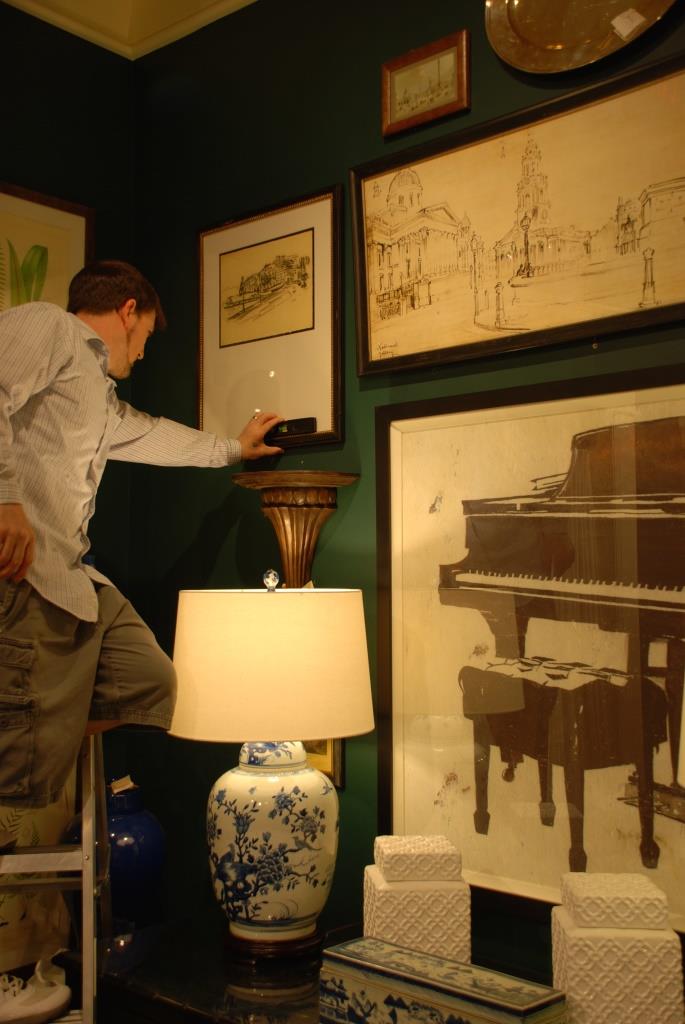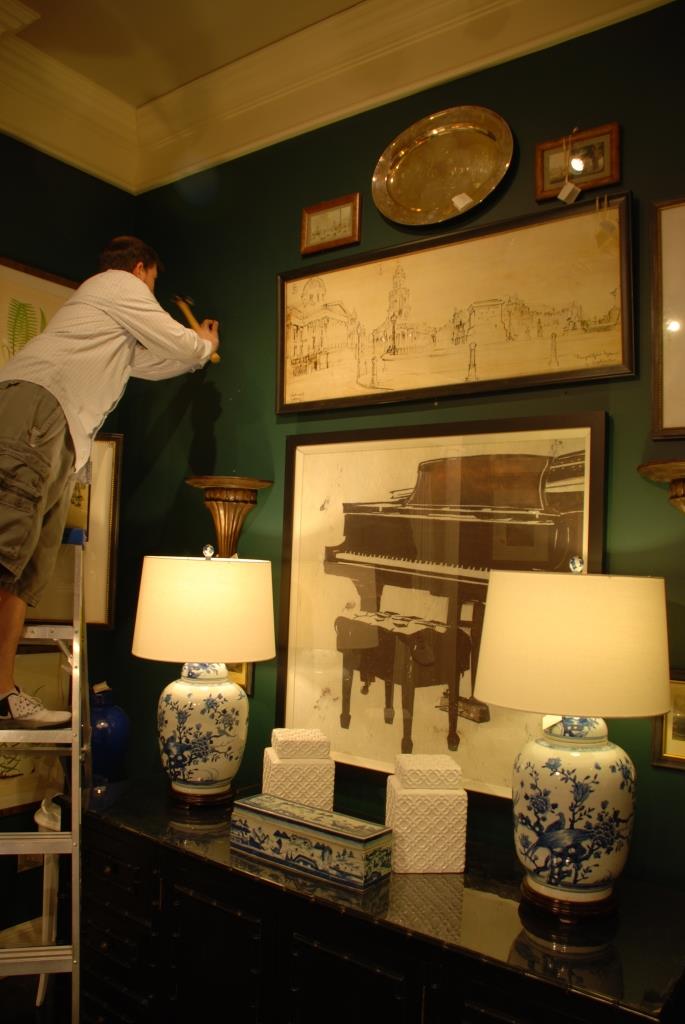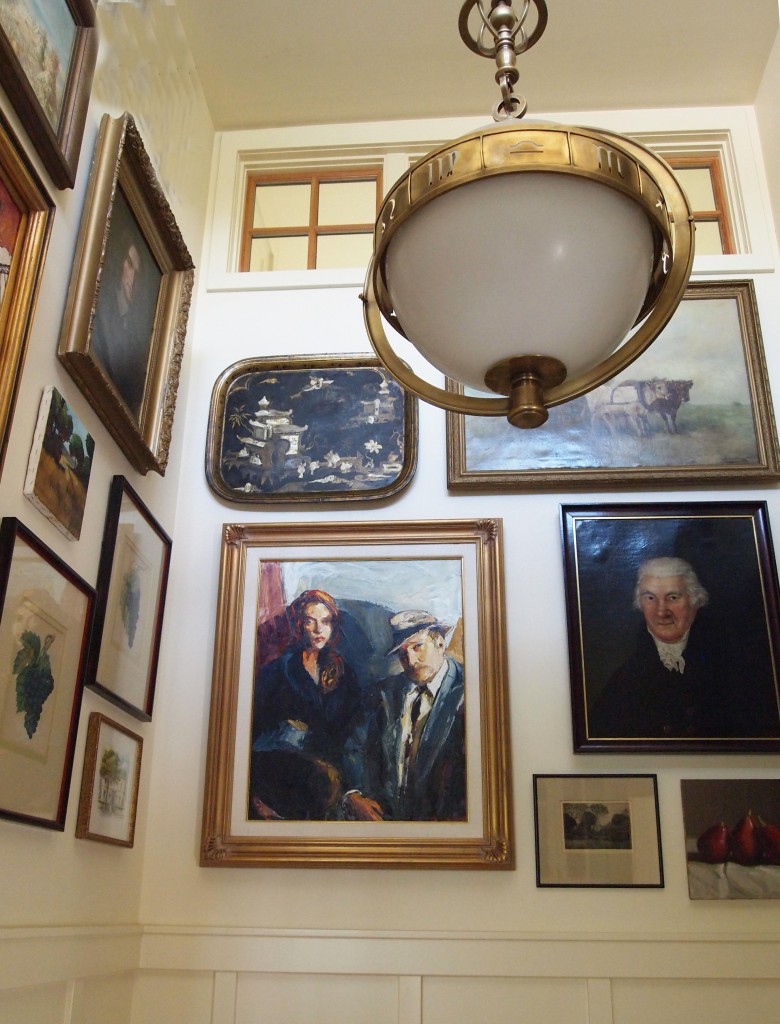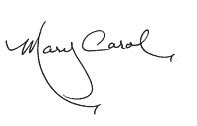Have you ever suffered from art-hanging paralysis? Frozen by a nagging fear that if you try to hang your lovely pieces of art, it will look bad, or wrong? You’re not alone. For some reason, many of us are afraid to take hammer and nail in hand and get going on those big, empty walls. To my husband’s dismay, I have the opposite problem. I just start pounding. If I don’t like what I see, I pull out the nail and pound away in a new place. (For that reason, I usually wait until he leaves to hang my artwork – it’s easier on his nerves!)
Hanging art doesn’t have to be hard or intimidating. I asked Dillon, who designs and installs all the artwork displays at Nell Hill’s, to share his secrets for creating gorgeous galleries on your walls. Here are his top 5 tips:
1. Mix Up Your Displays
My favorite rooms are those where the artwork displays on each wall are different from one another. Here are a few of Dillon’s favorite types of displays:
- Groupings
When creating artwork groupings at Nell Hill’s or for his clients (including me!), Dillon likes to blend together a wide variety of sizes, shapes and subjects. Too often people make the mistake of hanging one medium sized piece of art on a too-big wall, were it gets swallowed up. Another mistake, he says, is to cluster too many small pieces together, which gets too busy.
When he’s designing a grouping, Dillon starts with the largest piece of art, places it, then fills in with other pieces. He often staggers each piece so none of the frames line up.
In this collection, which Dillon created at one of his client’s houses, he incorporated several pieces of petit art. Sometimes, he says, not every piece you want to hang will fit in the display. And, sometimes, you will need to get additional art to finish a grouping. Don’t force what doesn’t look good.
- Grids
Grids can be the simplest to plan but the hardest to execute, Dillon says. The key to success is to measure, measure, measure. If you are off by even a fraction of an inch, the grid won’t look right.
When creating a grid, you can cover as little or as much of the wall as you like. This collection, done by Dillon at a client’s house, nearly reaches from the floor to the ceiling.
- A Big Picture
When you have a large piece of artwork, you may want to showcase it all by itself. We are carrying a lot of modern art at Nell Hill’s that is oversized. Hung by itself in a stairwell or over a sofa, it’s really dramatic. If you have a large wall, and the piece isn’t quite big enough to fill the space, you can flank it with two smaller pieces of art.
2. Have a Plan
If you are like my husband, and hate the idea of putting more nail holes in the wall than necessary, it may be a good idea for you to do a scale drawing before you start pounding, to ensure the pictures end up where you want them.
Sometimes Dillon lays all the pieces on the floor and moves them about until he comes up with a configuration he likes. Then he uses a tape measure to find the center of the grouping and marks it with a post-it note. He takes a photo of the grouping with his cell phone so he can reconstruct the look on the wall. Once he hangs the first piece, the rest fall into place easily.
3. Assemble the Right Tools
One key to making picture hanging easier is to have the right tools. Dillon uses:
- ladder or step stool
- tape measure
- claw hammer
- nails and anchors
- a level
- paper to record his calculations
- post-it notes
Instead of putting little pencil lines on the wall to mark where a picture is supposed to go, Dillon has come up with an ingenious system: He marks the spot with post-it notes. One note indicates the top of the art, the second the bottom. Seeing the post-it notes in place, both top and bottom, helps him also decide whether the art will be too low or too high, so he can change its location without pulling out a nail and starting over.
4. Hit the Right Nail
When you hang artwork, it’s easy to hit your thumb nail, not the picture nail. Aim carefully, Dillon advises!
5. If All Else Fails … call Dillon. He makes house calls.
In addition to hanging artwork at Nell Hill’s, Dillon also does home consultations and installations for Nell Hill’s. When Dan and I moved into our little lake home, I called on him to hang all the art on our walls. This eased Dan’s fears that I would turn our fresh new walls into a sea of holes! And, everything Dillon does just looks fabulous, so, why not?
To find out more about our in-home design services, or to schedule Dillon to help you overcome art-hanging paralysis, just give us a call toll-free 877-746-4320 or locally 816-746-4320. Happy hanging!
Next Week … It’s time for Welcome to Innisfree, My Cottage by the Lake. Our topic: Dining out, lake style. Come join me!

